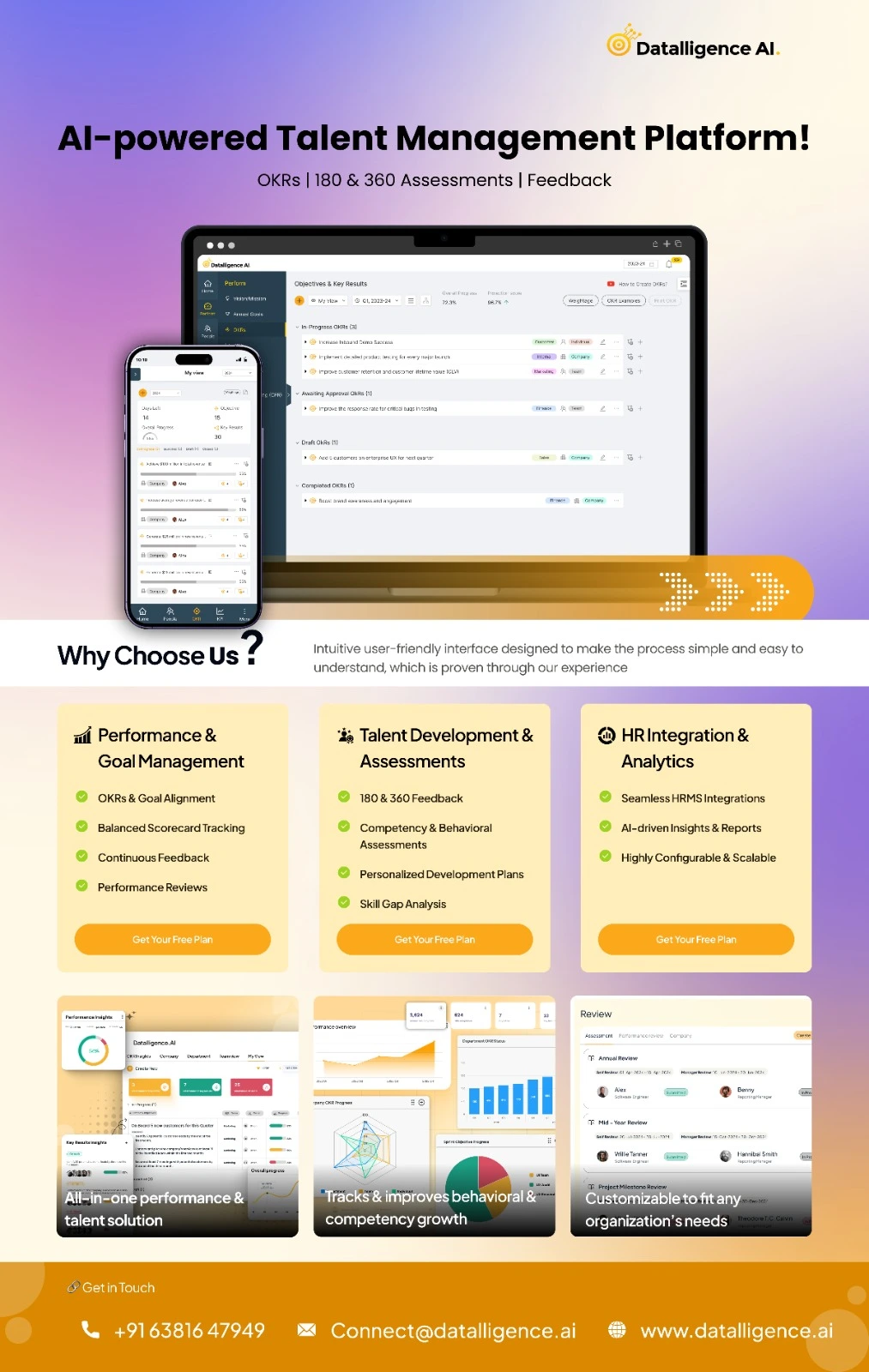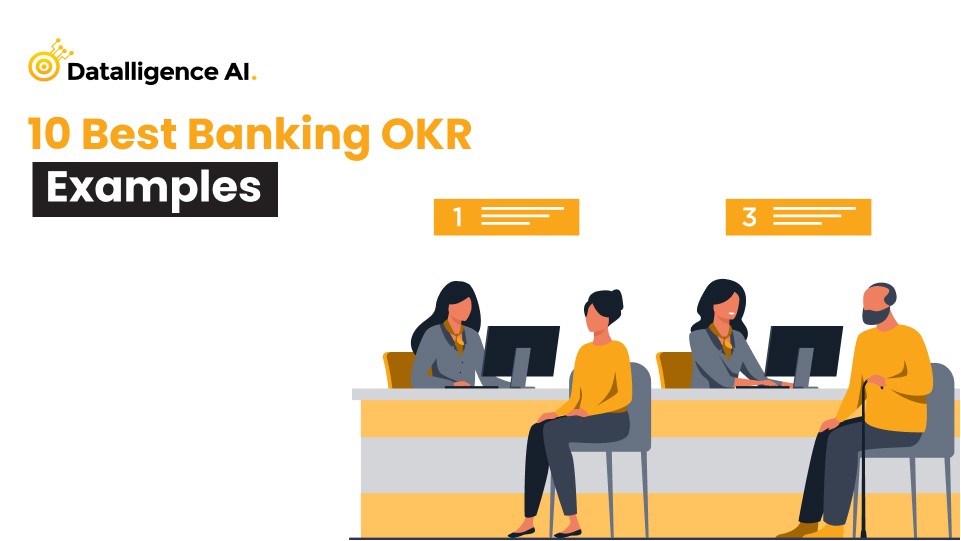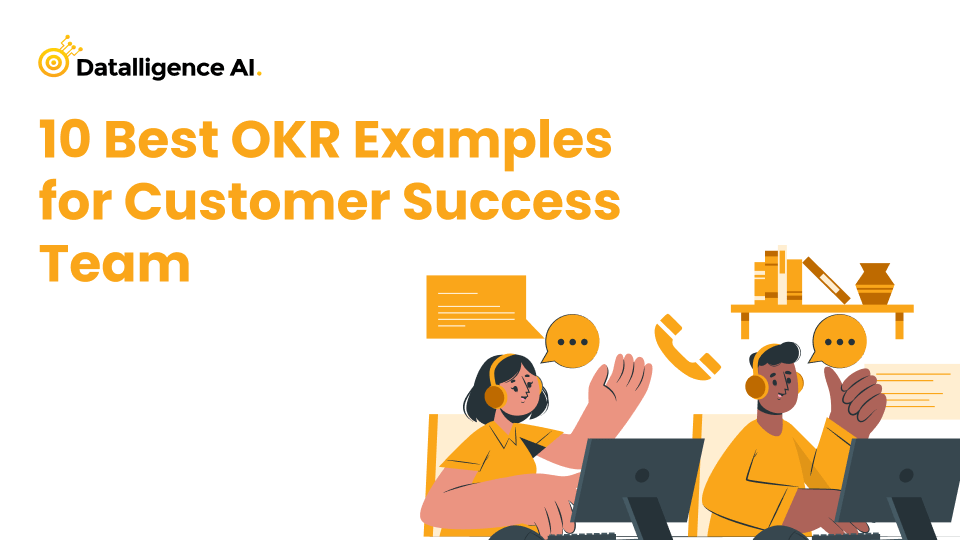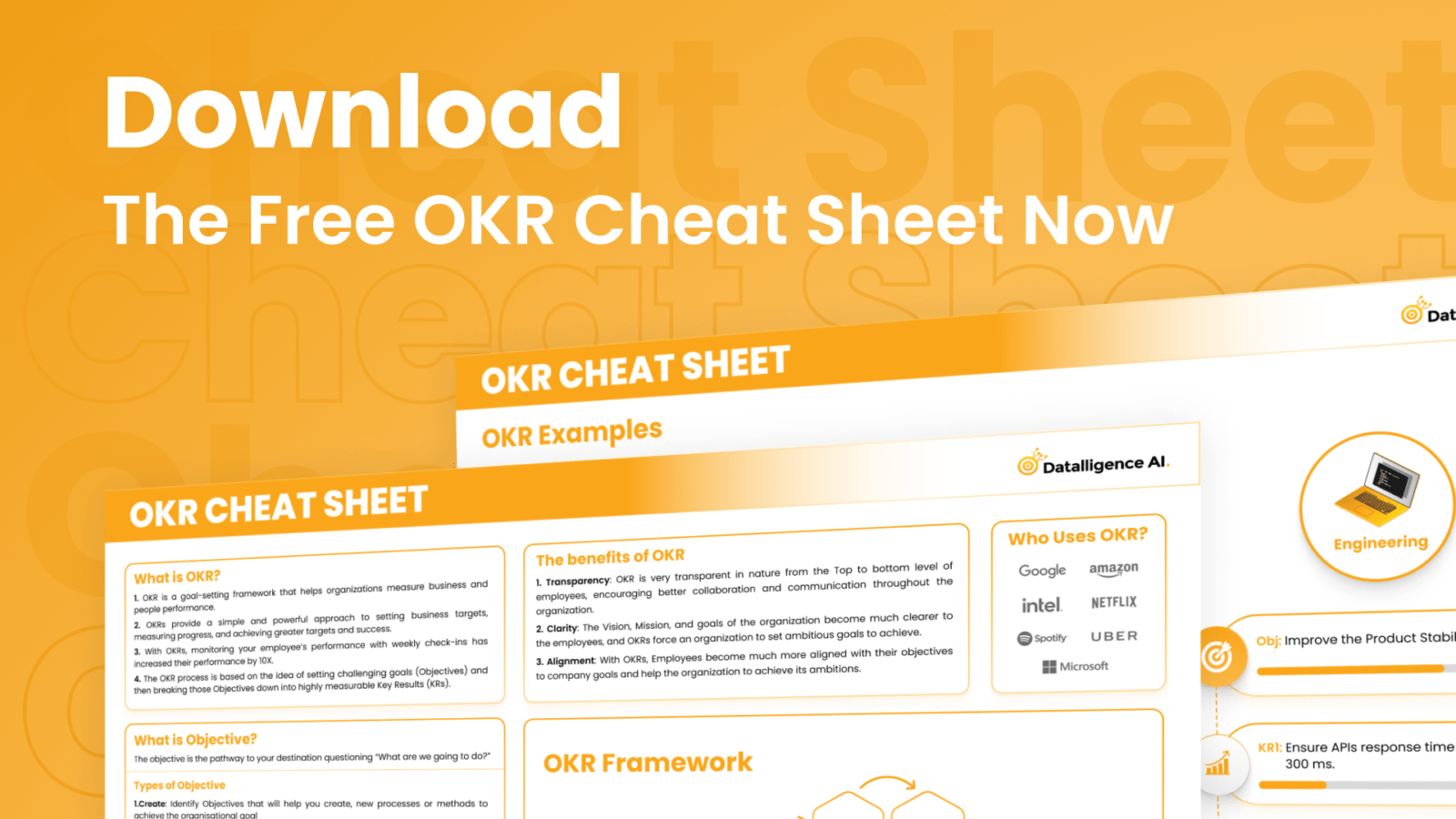How to Write Good OKR in 2025?🚀
Knowing how to write good OKRs in 2025 is essential as organizations face an increasingly dynamic and competitive landscape. To write good OKRs, begin with a clear Objective that is ambitious yet achievable, aligning with the company’s vision. The Key Results should be measurable, specific, and time-bound, focusing on outcomes rather than just tasks. This ensures that progress is quantifiable and directly linked to the organization’s goals.
In the fast-evolving business environment of 2025, learning how to write good OKRs is vital for fostering agility, transparency, and continuous improvement. Regular tracking and adjustments to OKRs help teams stay aligned with shifting priorities, making them a powerful tool for growth. Well-crafted OKRs create clarity, align teams across all levels, and drive performance toward achieving strategic objectives.
Start with Why Goal-Setting is Important 🌟
OKRs (Objectives and Key Results) are an essential goal-setting framework that aligns individuals, teams, and organizations to measurable outcomes. The power of OKRs lies in their simplicity, focus, and ability to track progress, creating alignment and engagement around measurable goals. 🚀
History of OKRs 📜
The concept of OKRs originated from Intel in the 1970s when Andy Grove, Intel’s CEO, introduced the methodology to drive focus and accountability within the organization. John Doerr, an employee at Intel, later popularized OKRs when he introduced them to Google in 1999. Google adopted OKRs to align its rapidly growing teams, focusing on achieving ambitious goals with clarity and accountability. 🔑
Over the years, OKRs have become synonymous with innovation and success. Companies like LinkedIn, Spotify, and Twitter have implemented OKRs to drive their strategic initiatives effectively. The flexibility of OKRs has made them popular across industries, ranging from tech startups to multinational corporations, in achieving their desired outcomes. 🌐
Examples of Success Stories 🎉
- Google: One of the earliest adopters, Google uses OKRs to align its global workforce and maintain focus on ambitious goals such as launching products like Gmail and Chrome.
- LinkedIn: Focused on achieving member growth and engagement by adopting OKRs.
- Spotify: Improved team collaboration and product innovation by emphasizing cross-functional OKRs.
These examples underscore the versatility and power of OKRs in fostering alignment and delivering measurable success. 🌟
Categories of Objectives 🗂️
In knowing how to write OKRs, the first step is geeting started with Objectives OKRs are created when there’s a need to align teams with company goals, track progress toward strategic objectives, drive innovation, or improve performance. They emerge during periods of growth, organizational change, or when focusing on specific projects, like launching new products or improving processes. OKRs can also be set when aiming to enhance employee engagement or addressing challenges like underperformance. Essentially, they are developed whenever clear, measurable outcomes are required to steer the company toward its vision.
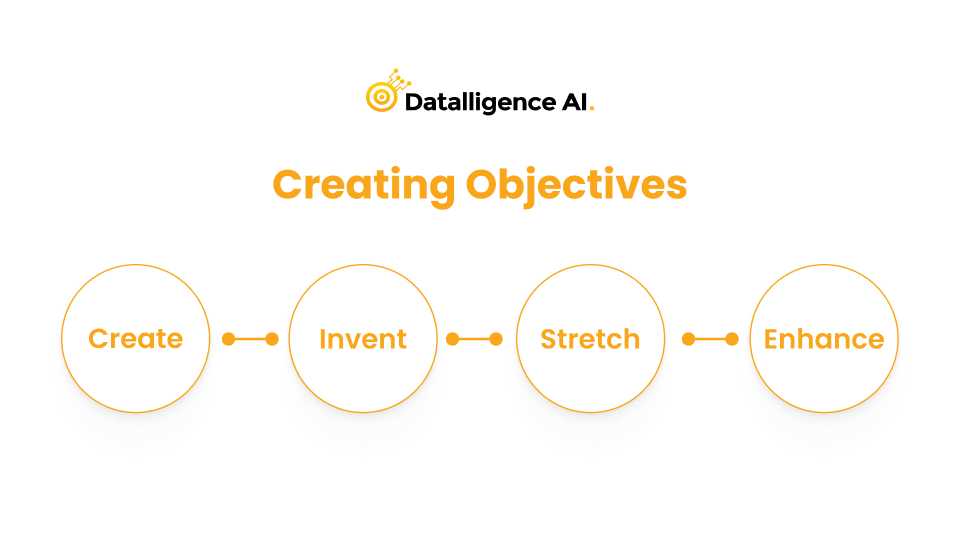
Create
Objective: Build new systems, products, or structures that directly contribute to achieving the organizational goal.
- Creating objectives focus on the inception of new projects, systems, products, or services that are fundamental to achieving strategic goals. These objectives usually involve laying the groundwork for new initiatives that will drive long-term value for the organization.
- Example: A product development team in a tech company might create a new product feature designed to improve user engagement, such as a personalized dashboard.
- Key Results:
- Complete the design and prototype of the personalized dashboard by the end of the first month.
- Launch the feature in the product within the next two months and achieve a 20% increase in active user engagement.
- Key Results:
Identify
Objective: Develop new processes or methods that contribute to achieving the organizational goal.
- Identifying objectives in this category involves examining gaps in current processes and developing innovative methods to improve efficiency or outcomes. These objectives focus on creating the necessary infrastructure, systems, or workflows to help the organization move closer to its overarching goals.
- Example: A marketing team in a SaaS company may identify the need for a new customer onboarding process to improve retention. The objective might be to create a seamless, automated onboarding system that reduces churn by 15% within the next quarter.
- Key Results:
- Develop and implement a new onboarding process by the end of the first month.
- Reduce customer churn from 20% to 15% by the end of the quarter.
- Key Results:
Invent
Objective: Foster innovation and intervention needed for product, process, and people.
- This objective type is focused on bringing new ideas into the organization, driving innovation that directly impacts the product, processes, or people. It can involve researching new technologies, creating new product features, or exploring training initiatives for team members to boost overall effectiveness.
- Example: An IT company wants to launch a new feature in its software product. The objective might be to invent a new AI-driven tool that enhances the user experience.
- Key Results:
- Prototype the new AI tool and conduct user testing by the end of the second month.
- Integrate AI functionality into the product by the end of the quarter, achieving a 10% increase in user satisfaction.
- Key Results:
Stretch
Objective: Set stretch goals to gauge the level of aspiration required to achieve the target.
- Stretch objectives are designed to push teams out of their comfort zones. They are ambitious and set a higher bar for success. These objectives require teams to think big and challenge their capabilities to achieve breakthrough results.
- Example: A sales team at a fast-growing tech startup sets a stretch objective to increase revenue by 50% in the next six months, aiming to expand into a new geographical market.
- Key Results:
- Acquire 100 new clients in the new region by the end of the second quarter.
- Achieve a 50% increase in quarterly revenue by the end of the six-month period.
- Key Results:
Enhance
Objective: Identify and implement enhancements that bring improved quality or outcomes.
- Enhancement objectives are aimed at improving existing processes, products, or services to ensure higher quality, efficiency, or performance. These objectives focus on incremental improvements that add value without completely overhauling the system.
- Example: A customer service team in a retail company aims to enhance the existing feedback system to increase customer satisfaction.
- Key Results:
- Implement a new automated survey system to capture customer feedback after every interaction.
- Achieve a 10% increase in customer satisfaction scores within the next two months by improving response time and service quality.
- Key Results:
Effective OKRs can be divided into specific categories, each catering to distinct organizational needs. Let’s explore these categories with scenarios and examples: 🌟
Formulas for Writing Effective OKRs ✍️
How to Write good OKRs? this question requires precision and alignment with organizational priorities. Here’s how to craft them effectively: 🌟
Objective Formula 🎯
Verb + What + In Order To
- Example: Increase customer engagement in order to strengthen market presence. 💬
Key Results Formula 📐
SMART Criteria
- Specific: Clearly define what you aim to achieve.
- Measurable: Quantify progress with metrics.
- Achievable: Ensure it’s realistic within the time frame.
- Relevant: Align with the overarching objective.
- Time-bound: Set a deadline for completion.
Example:
- Objective: Improve team collaboration in order to enhance project delivery.
- Key Result 1: Conduct weekly cross-departmental sync-ups.
- Key Result 2: Implement a project management tool by Q2.
- Key Result 3: Increase on-time project delivery rate to 95%. 📆
Formula for writing Key Results
Inputs
Objective: Focus on activities or actions that are controllable and influence the final outcomes.
- Description: Input Key Results refer to the specific actions or resources that contribute to the end goal. These are directly within the control of the team or individual and often serve as the foundation for achieving output and outcome-based results. Inputs focus on the “how” of achieving objectives, such as the number of actions taken or resources invested.
- Example: A sales team aims to increase revenue by making more outbound calls.
- Key Results (Input):
- Make 50 outbound sales calls per day.
- Conduct 10 demo sessions per week.
- Key Results (Input):
By focusing on increasing these controllable inputs, the team lays the groundwork for desired outputs, like closing more deals and ultimately driving higher revenue.

Inputs
Objective: Focus on activities or actions that are controllable and influence the final outcomes.
- Description: Input Key Results refer to the specific actions or resources that contribute to the end goal. These are directly within the control of the team or individual and often serve as the foundation for achieving output and outcome-based results. Inputs focus on the “how” of achieving objectives, such as the number of actions taken or resources invested.
- Example: A sales team aims to increase revenue by making more outbound calls.
- Key Results (Input):
- Make 50 outbound sales calls per day.
- Conduct 10 demo sessions per week.
- Key Results (Input):
By focusing on increasing these controllable inputs, the team lays the groundwork for desired outputs, like closing more deals and ultimately driving higher revenue.
Outputs
Objective: Measure the direct results that stem from the inputs and lead to the final outcome.
- Description: Output Key Results represent the immediate results from the input activities. These are measurable achievements or milestones that reflect the success of the actions taken. Outputs are typically short-term and often lead directly to the final outcomes.
- Example: A team aims to achieve a specific sales target.
- Key Results (Output):
- Achieve $500,000 in sales revenue by the end of the quarter.
- Close 20 deals worth an average of $25,000 each.
- Key Results (Output):
Output results serve as a clear benchmark for tracking progress. However, they do not fully capture the deeper impact, which is reflected in the outcome.
Outcomes
Objective: Measure the long-term impact and sustainability of the outputs achieved, reflecting overall progress toward the organizational goal.
- Description: Outcome Key Results are the long-term effects or end results of the actions taken through inputs and outputs. These provide clarity on how well the team or organization is progressing toward its objectives and allow for a more comprehensive view of success. Outcomes are often broader and more aligned with the company’s vision and strategic goals.
- Example: A company wants to increase its revenue by 30% by the end of the year.
- Key Results (Outcome):
- Increase overall revenue by 30% by year-end.
- Achieve a 10% growth in customer retention rate.
- Expand into two new regional markets, generating an additional $2 million in sales.
- Key Results (Outcome):
Outcome Key Results provide more clarity on the broader impact of the efforts, such as how the output contributes to sustained growth, profitability, or market share. While outputs measure what’s been achieved in the short-term, outcomes assess the deeper, long-term success and overall progress toward the organizational goal.

Department-Specific Examples 🏢
Marketing Department 📣
- Objective: Boost brand visibility in digital channels to attract new leads.
- Key Result 1: Increase website traffic by 30% within Q1.
- Key Result 2: Publish 10 high-quality blog posts by March.
- Key Result 3: Achieve a 5% increase in social media followers.
Sales Department 💼
- Objective: Drive revenue growth to achieve quarterly targets.
- Key Result 1: Close 20 new deals by the end of Q1.
- Key Result 2: Increase average deal size by 10%.
- Key Result 3: Improve lead conversion rate by 15%.
HR Department 👩💼
- Objective: Enhance employee engagement to foster a productive work culture.
- Key Result 1: Launch a pulse survey by January.
- Key Result 2: Achieve 75% participation in company-wide training programs.
- Key Result 3: Improve employee retention by 10%.
Tips for Successful OKR Implementation ✅
- Involve Stakeholders: Collaborate with teams to define objectives and key results.
- Align with Strategy: Ensure OKRs support the company’s vision and mission.
- Keep it Simple: Avoid overloading with too many OKRs; focus on 3-5 per cycle.
- Review and Adjust: Conduct regular check-ins to track progress and make necessary adjustments.
- Leverage Technology: Use OKR software like Datalligence to streamline tracking and reporting. 🖥️
Conclusion 📘
How to write good OKRs are often asked this blog would have given a clear guide. OKRs are a proven framework for driving focus, alignment, and measurable results. By categorizing objectives, applying the right formulas, and learning from successful implementations, organizations can harness the true potential of OKRs. The Datalligence OKR Software simplifies the OKR journey, enabling organizations to set and achieve impactful goals 🌟


